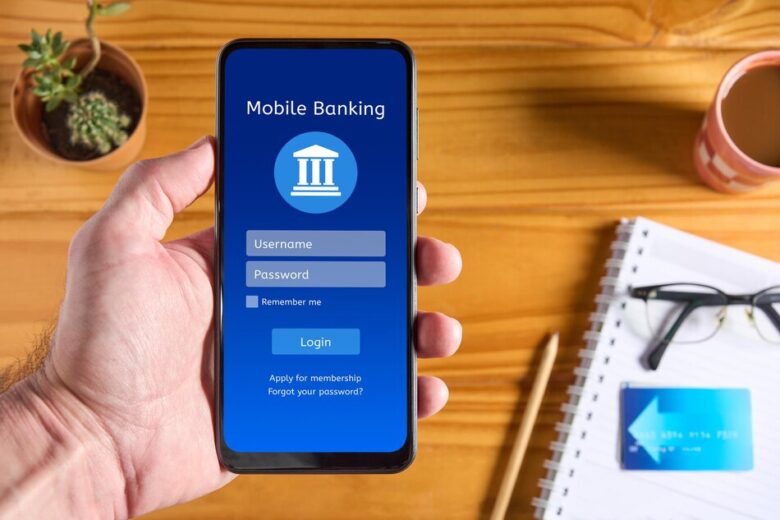In the digital age mobile banking apps have changed how money is managed. They’ve changed a lot because of how quickly technology is changing things. Customers now have more security, ease of use and new features to meet their specific needs. This piece discusses how protection, ease of use and new ideas affect mobile banking apps.
Security: Safeguarding Financial Assets In The Digital Age
When making mobile banking apps security comes first. As more people use mobile banking all financial transactions must be safe and honest. Multi factor identification, digital identity and end to end encryption are some of the ways that banks get around this problem.
With multi factor authentication users must confirm their identities before accessing their accounts using a password fingerprint or face. This plan dramatically lowers the chances of illegal entry which reduces the risk of identity theft and scams. Using fingerprint and face recognition tools for identification is now very safe.
Mobile banking apps use unique biological traits to verify users’ names correctly. This makes the identification process easy and safe. End to end security keeps sensitive information sent between the user device and the banking system safe.
With this encryption method only the intended recipient can access the information keeping financial assets safe from theft. Banks’ constantly improving security shows that they care about keeping customers’ money and personal information secure in this digital age.
Convenience: Redefining Banking Accessibility
Mobile banking apps have changed how people handle their money by making it easier and more flexible. Customers can do various financial tasks with their phones so they don’t have to go to banks or ATMs.
With just a few clicks on their smartphone or computer mobile banking apps let users see their account amounts, look at a history of transactions, move money, pay bills, deposit checks and apply for loans or credit cards. This saves time and improves their banking experience.
Mobile banking apps are more accessible because they have mobile wallets peer to peer payments and personalized financial information. When you utilize a mobile wallet your credit card information stays safe on your phone and you can use cashless payments at stores that accept them. People can use their cell phone numbers or email addresses to send money instantly to friends, family or businesses without using cash or checks. This is called P2P payment features.
Personalized financial insights use AI and data analytics to help people make smart decisions about their money by giving them planning saving and investment tips. Mobile banking apps make banking more accessible and convenient for customers making managing their money less complicated.
Innovation: Driving The Future Of Banking
New ideas help mobile banking apps improve which changes the future of financial services. To meet customers’ needs in a digital world banks are always looking into new tools and benefits. AI and machine learning systems are significant steps forward for mobile banking apps.
With these technologies banks can look at vast amounts of data to determine how customers act, what they like and what trends are happening. This lets them offer personalized services and ideas. For open banking and APIs to work, banks and outside service companies must work together more.
New fintech technologies such as planning apps, trading platforms and digital accounts work seamlessly with mobile banking apps to offer customers a full range of financial services. AR and VR technology might change the way people handle their money.
Imagine looking at your budget or investment account on your phone or getting personalized financial advice from a virtual helper. As technology quickly improves mobile banking apps are always getting better. In this digital age banks can stay ahead of the curve and offer customers unbeatable value by accepting new technology and supporting new ideas.
User Experience: Enhancing Engagement And Satisfaction
Apps for mobile banking UX affect how engaged happy and loyal users are which makes them very important for their growth. In today’s competitive market banks put a lot of effort into creating smart and easy to use platforms so customers can have a smooth and enjoyable banking experience.
UX change includes making the app look better and easier to use. The layout of banking apps is meant to be clear and simple so that users can easily find their way around the app features and functions. To make customers happier labels that are easy to read visual cues and a sensible flow are used.
Customizing the UX is also very important. Banking apps use stats and user information to make the experience more personal. Banks can retain customers by giving them personalized product ideas tailored rewards and financial data.
Mobile banking apps are adding features that make them more accessible so that disabled customers can use them too. Voice instructions screen readers and the ability to change the size of text make it possible for people who are blind or have limited mobility to use banking services independently.
When designing and building mobile banking apps the user experience must come first to keep users engaged, happy and loyal. By continually improving the user interface flexibility and usability banks can give customers unique experiences that keep them returning.
Emerging Technologies: Shaping The Future Of Banking
The rapid rise of new technologies affecting financial services is directly linked to the progress made in mobile banking apps. Banks are exploring blockchain cryptocurrencies, the Internet of Things IoT and 5G links to make things safer, more efficient and better for customers.
Bitcoin is based on blockchain technology which could change how identity is verified, smart contracts work and cross border payments are made in banks. Blockchain based solutions help banks save money, speed up deals and gain the trust of all stakeholders.
The Internet of Things IoT lets banks create banking experiences that are smooth and streamlined. Mobile banking apps can be used with smartwatches, fitness trackers and home control systems to give users real time financial reports alerts and personalized ideas based on their habits and choices.
The speed, reliability and link of 5G technology will improve mobile banking. 5G networks have more bandwidth, faster download and upload speeds and less delay. This means banking services can be accessed even in rural or densely populated areas.
As banks adopt new technology the financial industry can experience endless new ideas and changes. By staying on top of new technologies and encouraging people to collaborate and come up with new ideas banks can improve their services and meet customers’ changing needs.
Conclusion
Mobile banking apps keep changing how people handle their money making it safer, easier and more valuable. Banks must quickly adapt to new rules and technologies as technology and customer needs change. Managing the complex regulation environment, improving user experience and keeping up with new technology may help banks stay ahead of the curve and make better banking services that meet the wide range of needs of digital customers.



